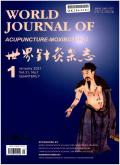Acupuncture-moxibustion for chemotherapy-induced peripheral neuropathy: A systematic review and network meta-analysis
IF 1.3
4区 医学
Q4 INTEGRATIVE & COMPLEMENTARY MEDICINE
引用次数: 0
Abstract
Background
Chemotherapy-induced peripheral neuropathy (CIPN) is a common neurotoxic reaction for patients undergoing anticancer regimens. More and more studies show that acupuncture-moxibustion plays a positive role in the management and prevention of CIPN.
Objective
To evaluate the clinical effect of acupuncture-moxibustion in patients with CIPN, with a focus on assessing its effectiveness on improving treatment response rates, alleviating pain, enhancing quality of life (QoL), and improving nerve conduction. Additionally, the study compares the differences in clinical effectiveness among various acupuncture therapies for CIPN management.
Methods
Six databases (PubMed, Embase, Cochrane Library, Web of Science, OVID, and China National knowledge infrastructure [CNKI]) were searched from earliest available dates to December 1, 2024, and only randomized controlled trials (RCTs) containing relevant search terms were included. Network meta-analysis of the RCT data were conducted to assess the effective rate of the treatment as the primary outcome. Nerve conduction, pain scores, and QoL were assessed as secondary outcomes. The version 2 of the Cochrane risk-of-bias tool for randomized trials (RoB 2) was used to examine methodological quality, and Stata 15.1 was used to take network meta-analysis.
Results
A total of 34 RCTs involving 2039 participants and 9 acupuncture-moxibustion therapies were included. The network meta-analysis evaluated the effect of different acupuncture therapies across four outcomes: effective rate, pain scores, QoL, and nerve conduction. For effective rate, electroacupuncture combined with moxibustion ranked first with a surface under the cumulative ranking curve (SUCRA) value of 62.9 %, followed by acupoint application (56.9 %) and moxibustion (52.3 %). Electroacupuncture combined with moxibustion had the highest effective rate compared to standard of care treatments (odds ratio [OR] = 1.62, 95 % confidence interval [CI] −5.18 to 8.43). For alleviating pain, auricular acupressure had the highest SUCRA value (85.9 %), while electroacupuncture and electroacupuncture combined with three-edged needle ranked second (63.4 %) and third (51.0 %), respectively. Auricular acupressure significantly reduced pain (SMD= −1.73, 95 % CI −3.54 to 0.08). For QoL, warming needle ranked first (SUCRA= 92.0 %), followed by electroacupuncture (48.7 %) and filiform needle (43.0 %). Warming needle significantly improved QoL scores (SMD= −0.75, 95 % CI −1.66 to 0.15). For nerve conduction, electroacupuncture combined with three-edged needle had the highest SUCRA value (100 %), while moxibustion and filiform needle ranked second (65.3 %) and third (39.2 %), respectively. Electroacupuncture combined with three-edged had the best neuroprotective effect (SMD = 1.85, 95 % CI 1.23 to 2.47).
Conclusion
Network meta-analysis based on the primary outcome (effective rate) suggests that electroacupuncture combined with moxibustion seems to be the optimal acupuncture therapy for chemotherapy-induced peripheral neuropathy (CIPN). Secondary outcomes exhibited considerable heterogeneity: auricular acupressure demonstrated superior efficacy in pain relief, electroacupuncture combined with three-edged needle showed greater advantages in improving nerve conduction function, while warm needling was associated with more significant improvements in QoL. Given the variability in interventions across different outcome measures and the methodological limitations of included studies, the current evidence requires cautious interpretation. Systematic review registration: Registration number in PROSPERO: CRD42024560017.
针灸治疗化疗引起的周围神经病变:系统综述和网络荟萃分析
化疗诱导的周围神经病变(CIPN)是接受抗癌方案的患者常见的神经毒性反应。越来越多的研究表明,针灸对CIPN的管理和预防具有积极作用。目的评价针刺治疗CIPN患者的临床疗效,重点评价其在提高治疗有效率、减轻疼痛、提高生活质量、改善神经传导方面的效果。此外,本研究比较了不同针灸疗法治疗CIPN的临床疗效差异。方法检索PubMed、Embase、Cochrane Library、Web of Science、OVID、中国知网(CNKI) 6个数据库,检索时间为最早可查日期至2024年12月1日,仅纳入包含相关检索词的随机对照试验(RCTs)。对RCT数据进行网络荟萃分析,以评估治疗的有效率作为主要结局。神经传导、疼痛评分和生活质量作为次要指标进行评估。采用Cochrane随机试验风险偏倚工具第2版(RoB 2)检验方法学质量,采用Stata 15.1进行网络荟萃分析。结果共纳入34项随机对照试验,受试者2039人,共纳入9种针灸疗法。网络荟萃分析评估了不同针灸疗法在四个方面的效果:有效率、疼痛评分、生活质量和神经传导。有效率方面,电针联合艾灸以累计排序曲线下曲面(SUCRA)值62.9%居首位,其次为穴位敷贴(56.9%)和艾灸(52.3%)。与标准护理治疗相比,电针联合艾灸的有效率最高(优势比[OR] = 1.62, 95%可信区间[CI] - 5.18 ~ 8.43)。在缓解疼痛方面,耳穴按压的SUCRA值最高(85.9%),其次为电针(63.4%),第三为电针联合三棱针(51.0%)。耳穴压可显著减轻疼痛(SMD= - 1.73, 95% CI = - 3.54 ~ 0.08)。对于生活质量,温针排名第一(SUCRA= 92.0%),其次是电针(48.7%)和丝状针(43.0%)。温针显著提高生活质量评分(SMD= - 0.75, 95% CI = - 1.66 ~ 0.15)。对于神经传导,电针联合三棱针的SUCRA值最高(100%),艾灸次之(65.3%),丝状针次之(39.2%)。电针联合三刃的神经保护效果最好(SMD = 1.85, 95% CI 1.23 ~ 2.47)。结论基于主要转归(有效率)的网络荟萃分析显示,电针联合艾灸是治疗化疗性周围神经病变(CIPN)的最佳针刺疗法。次要结局表现出相当大的异质性:耳穴按压在缓解疼痛方面表现出更好的效果,电针联合三棱针在改善神经传导功能方面表现出更大的优势,而温针在改善生活质量方面表现出更显著的效果。考虑到不同结果测量的干预措施的可变性以及纳入研究的方法学局限性,目前的证据需要谨慎解释。系统评审注册:普洛斯佩罗注册号:CRD42024560017。
本文章由计算机程序翻译,如有差异,请以英文原文为准。
求助全文
约1分钟内获得全文
求助全文
来源期刊

World Journal of Acupuncture-Moxibustion
INTEGRATIVE & COMPLEMENTARY MEDICINE-
CiteScore
1.30
自引率
28.60%
发文量
1089
审稿时长
50 days
期刊介绍:
The focus of the journal includes, but is not confined to, clinical research, summaries of clinical experiences, experimental research and clinical reports on needling techniques, moxibustion techniques, acupuncture analgesia and acupuncture anesthesia.
 求助内容:
求助内容: 应助结果提醒方式:
应助结果提醒方式:


